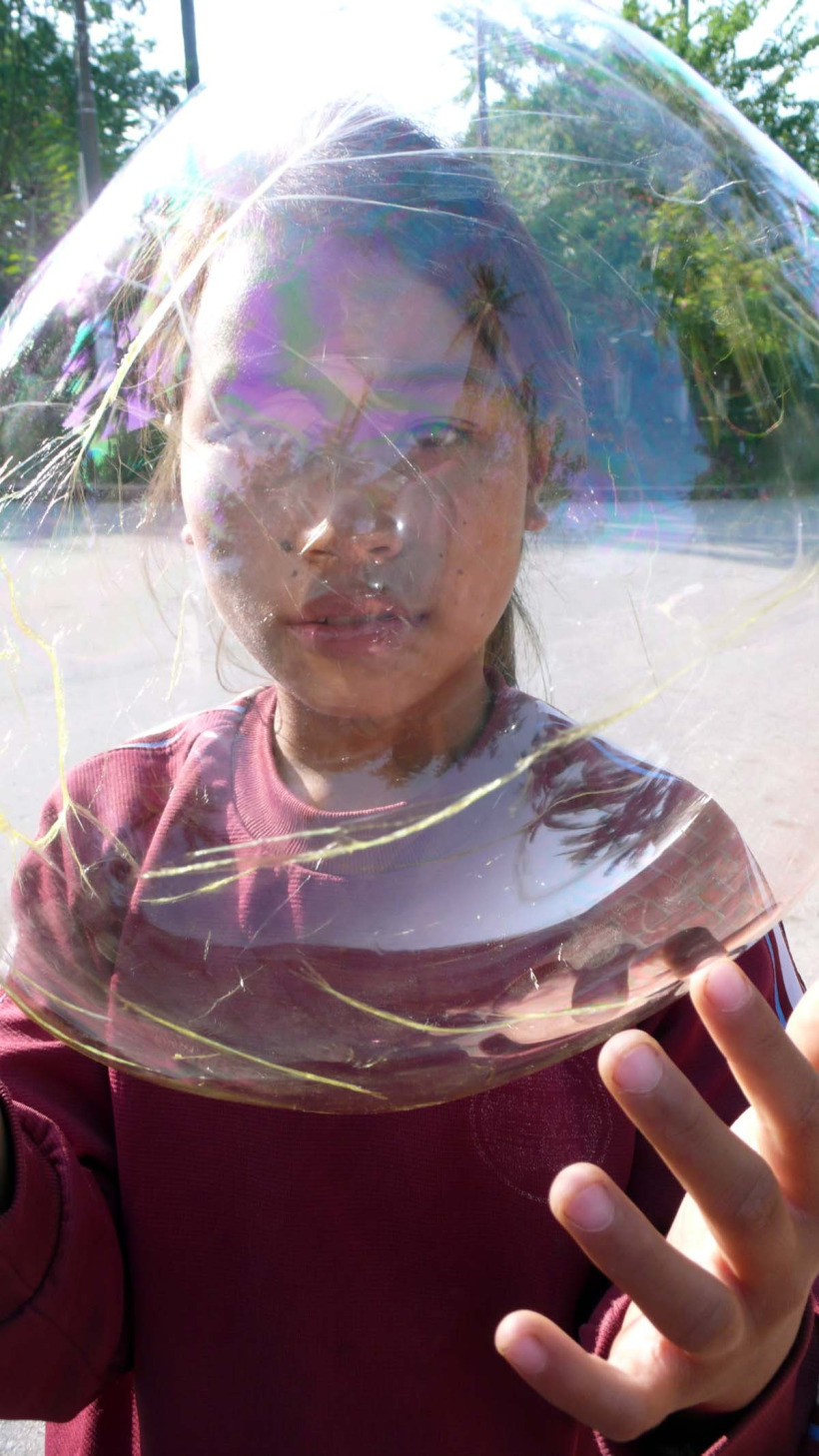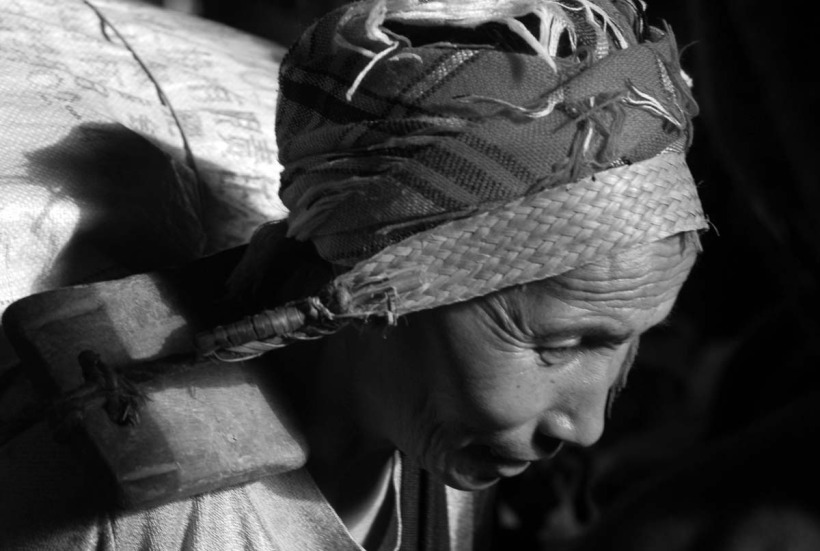A bubble girl story
 12.23.2010
12.23.2010 Greetings,
A wise traveler named Hugo, the Director of a Life Improbability Research Center near Paris dropped me a comment asking for the story about the Laotian bubble girl.

Here it is. One day I walked through Luang Prabang and reached a dirt path leading down to the river, a bamboo bridge and distant weaving villages. At the top of the path three young girls were selling, or hoping to sell hand made colorful wrist bands, small wooden beads and bamboo dolls. Same as at Angkor temples.
In the afternoon when I returned they were playing with thin plastic air filled balls. Her eyes held all the secrets of the world.
Like many kids they attend school either in the morning or afternoon.
It's the same universal story, "We need money for our families."
Keep it in the air.
Metta.

A new image gallery of Stung Treng town and area is live. It features the Women's Development Center (Mekong Blue), kids at the primary school, and the wat and flags at Thala Bovivat across the Mekong.
 Laos,
Laos,  Photography,
Photography,  Travel,
Travel,  Travel tales,
Travel tales,  economics | in
economics | in  Anthropology,
Anthropology,  Art,
Art,  Laos,
Laos,  Nature,
Nature,  People,
People,  Photography,
Photography,  Travel,
Travel,  Writing
Writing 
















